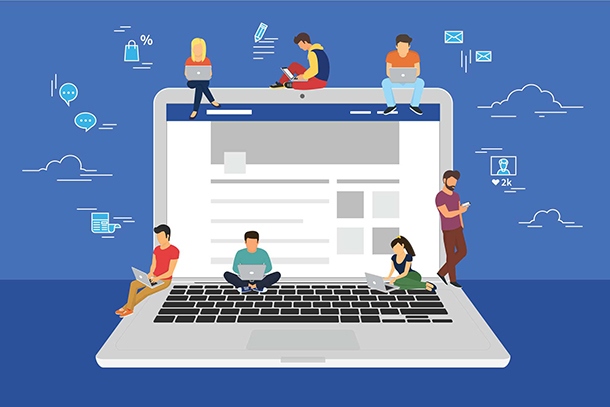A Leonardo DiCaprio remark at the Academy Awards on climate change goes viral. An emotionally charged drama about teen suicide becomes one of the year’s most talked-about shows on social media. And a popular app has people scouring for critters across the country on their smartphones.
USC researcher Jon-Patrick Allem, PhD, MA, cites these stories as examples of pop culture phenomena that can give public health experts useful information on what people care about and occupies their time.
For the past five years, Allem, a research scientist in the Department of Preventive Medicine at the Keck School of Medicine of USC, has used information from Google searches or social media posts — “big social media data” — to provide rapid and reliable information. The goal: to help experts in public health and policy be more responsive to the public they serve.
What does your research say about the Netflix series 13 Reasons Why, which explored a fictional teen’s suicide?
By monitoring internet searches, my colleagues and I showed that 13 Reasons Why increased interest in both suicide awareness and searches indicative of suicidal ideation.
For example, searches for “suicide prevention” rose by 23 percent and searches for “how to commit suicide” increased by 26 percent compared to historical search trends. In fact, suicide searches were 19 percent higher for the 19 days following the series’ release. This number reflects over 1 million more searches than expected.
In light of this data, the show’s producers could consider including a suicide hotline number at the beginning of each episode or removing scenes showing suicide.
This isn’t the first time you used big social media data to quickly get a pulse of a trending topic. Talk about your look into the augmented reality game Pokémon Go.
Soon after the game’s release, my colleagues and I analyzed Twitter postings that combined the word “Pokémon” with words like “driving,” “drive” or “car.” We found that hundreds of thousands of players were driving while playing the game or were distracted by other players, risking serious injury.
We also analyzed Google News articles and identified 14 different car crashes that reporters attributed to Pokémon Go. After our study came out, the game maker made modifications to curb this type of behavior, setting a precedent for augmented reality games in the future.
You also used social media posts and web search terms to understand how Leonardo DiCaprio influenced interest in climate change and how Charlie Sheen raised HIV awareness. What did you learn?
Focusing on the day of DiCaprio’s Academy Awards acceptance speech, we monitored all news reports, tweets and Google searches mentioning the words “global warming,” “climate change” or other similar terms. Despite an insignificant increase in traditional news coverage, there were more than 250,000 unique tweets mentioning these terms on the day DiCaprio spoke. In practical terms, DiCaprio generated five times more interest in climate change than was generated by Earth Day 2015.
In 2015, Sheen revealed his HIV-positive status. Our recent study showed that his announcement corresponded with record-setting increases in searches like “HIV test” as well as sales in OraQuick — the only in-home HIV testing kit. We demonstrated how Google search data could be used to predict sales. In other words, we showed how online behaviors could be used to validly predict offline behaviors.
These studies build on earlier work that suggests using a concrete example [one individual] compared to abstract examples [groups of people] is more useful when trying to guide behavior.
Why is it important for public health experts to analyze big social media data?
Once we get past the noise, we have the ability to understand public sentiment, attitudes and behaviors by listening to what people are saying in their own words. For example, we are currently using data from Instagram and Twitter to capture and document the context in which individuals use, and are marketed, tobacco products like electronic cigarettes, hookah and flavored cigars. Big social media data allow people to demonstrate how and why they use these tobacco products. At times, the data can serve as a massive focus group.
How can we use this trending information to bring about positive public health change?
Our Pokémon Go study is a great example of research that produces actionable insights that bring about change.
Take another example: Search engines like Google could interpret searches indicative of psychological distress or a particular illness and suggest links to evidence-based, internet-based treatment options in coordination with health agencies.
The internet is a stigma-reducing and cost-reducing venue to reach patients who search for but do not receive treatment because they cannot afford medications or copayments.
Your subfield emerged in the past 15 years. How is it different from other fields of study?
The data is always publicly available assuming you have access to the internet. This is in contrast to other fields of study where the culture among researchers is to make their data unavailable for prolonged periods of time, even years after publication.
Additionally, data is collected in near-real time. In the case of 13 Reasons Why, there was tremendous debate but no data.
Big social media data can be used to fill certain knowledge gaps quickly. While one study using one data source is by no means definitive, one study based on timely data can provide an important starting-off point to address an issue of great import to public health or policy.
— Zen Vuong


